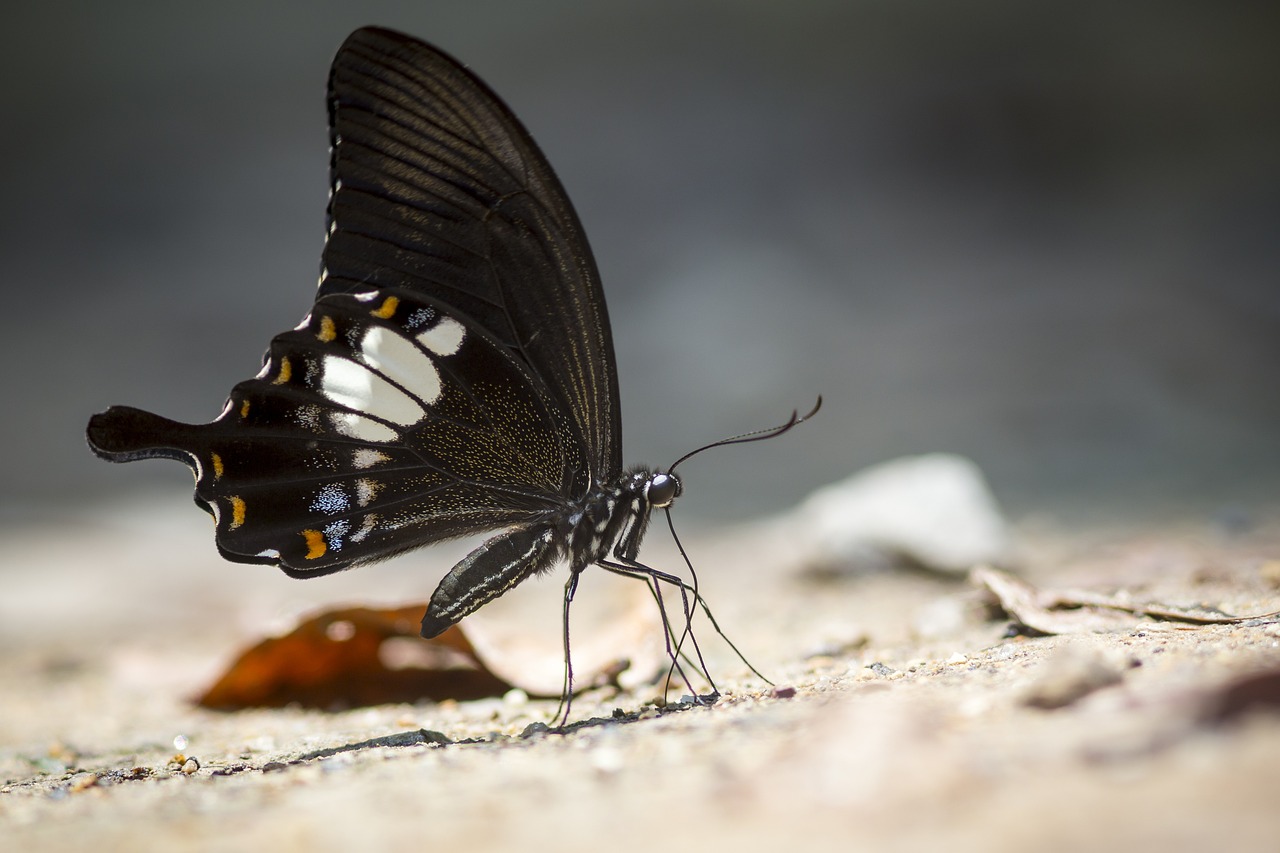The Yellow Helen and Black and White Helen are common names for the butterfly species Papilio nephelus. This species is known for its striking appearance and is found in various parts of Asia. Here is a detailed overview of Papilio nephelus:
Description
- Appearance: The Yellow Helen, Papilio nephelus, is a large and striking butterfly with a wingspan ranging from 100 to 120 millimeters.
- Upper Side: The forewings are black with a series of white spots and streaks. The hindwings are also black but feature large yellow or white patches and a series of smaller white spots near the edges.
- Under Side: The underside of the wings is paler with a similar pattern, making it less conspicuous when at rest.
- Sexual Dimorphism: Males and females are similar in appearance, though females are typically larger and may have slightly different markings.
Habitat
- Distribution: Papilio nephelus is found in various parts of Asia, including India, Sri Lanka, Myanmar, Thailand, Malaysia, Indonesia, and the Philippines.
- Preferred Environment: This butterfly prefers tropical and subtropical forests, often found in hilly and mountainous regions. They are also seen in gardens, plantations, and along forest edges.
Behavior and Ecology
- Feeding: Adults primarily feed on nectar from a variety of flowering plants. They are often seen visiting flowers such as lantanas and hibiscus.
- Flight: The Yellow Helen is known for its strong and graceful flight. It often flies high and rapidly but can also be seen fluttering slowly when feeding.
- Breeding: Females lay eggs singly on the leaves of host plants, which belong to the Rutaceae family, including citrus trees. The larvae, or caterpillars, feed on the leaves of these plants.
Life Cycle
- Eggs: Eggs are spherical and laid singly on the leaves of host plants.
- Larvae: The caterpillars are green with white and brown markings, mimicking bird droppings in the early stages for camouflage. As they grow, they become more green with spiny projections.
- Pupae: Pupation occurs in a chrysalis that is typically green or brown, depending on the surroundings, and mimics a leaf or twig.
- Adults: Upon emerging from the chrysalis, the adults expand and dry their wings before taking flight.
Conservation Status
- Threats: The main threats to Papilio nephelus include habitat loss due to deforestation and agricultural expansion. Pesticide use can also impact their populations.
- Conservation Efforts: Conservation efforts focus on preserving natural habitats and promoting sustainable agricultural practices. In some regions, butterfly farms and gardens contribute to their conservation by providing safe environments and educating the public.
Interesting Facts
- Mimicry and Camouflage: The caterpillars exhibit remarkable mimicry by resembling bird droppings in their early stages, which helps protect them from predators.
- Pollination: As nectar feeders, adult Yellow Helens contribute to the pollination of various flowering plants, playing an essential role in the ecosystem.
Observing Yellow Helens
- Best Places: To observe Papilio nephelus, visit tropical and subtropical forests, butterfly gardens, and plantations where their host plants are abundant.
- Watching Tips: Early morning and late afternoon are the best times to see these butterflies, as they are most active during these periods. Use binoculars or a camera with a zoom lens to observe their behavior without disturbing them.
Papilio nephelus, with its stunning appearance and fascinating life cycle, is a beautiful representative of the biodiversity in tropical and subtropical Asia. Conservation efforts are crucial to protect this species and ensure that it continues to grace our natural world with its presence.
Visited 170 times, 23 visit(s) today
Views: 421
Subscribe to the newsletter:
